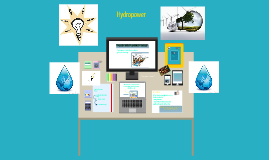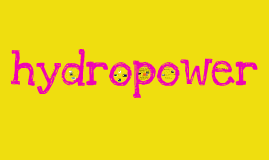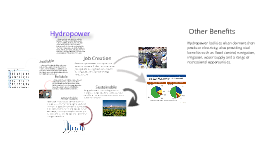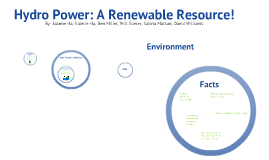hydropower
Transcript: hydropower By, Natalie Wilkins, Lily Smith, and Danielle Matzelle (: FUTURE More than 500 dams are affecting 130 diffrent rivers are set up for relicensing in next decade. More than 2,300 hydroelectric dams currently harness U.S. rivers to provide nearly 11%of the country'stotal energy supply. Producing power from river might seem strange because there are no billowing smokestacks.But hydropower can increase water temperatures, change levels and eliminate nauralriver flow. vermont and maine are already feeling the impacts of having thier water managed by absentee owners. Changes in both states are leading to rapidchanges in flows and eroding banks, and there is more to come. This dam (the three gorge dam in china) flooded archaeological and cultural sites, displaced 1.4 million people, and is causing significant ecological changes, including an increased risk of landslides. The building of the dam has been a controversial topic, both in China and abroad. WHERE AND HOW WE GET IT We get hydropower from the water rushing down dams. Hydropower is usually used in irrigation of land for farming. It can be used to power machinery like saw and water mills. China is the largest producer of hydropower followed by Canada, Brazil and the U.S.A.. Since no fuel is burned in the processes of hydropower there is no pollution or greenhouse gases going into the air. HOW WE USE IT AND WHO USES IT Hydropower is used to make electricity which mainly used to operate machines. Roughly 270,000 mega watts of hydroelectric power is in place a day. A mega watt is 1000 watts. Hydropower is used in 35 million homes nationwide and 1 billion homes worldwide. The 77,000 mega watts of electricity in the U.S. is equal to almost 500 barrels of oil. 11% of the electricity in the U.S. is from hydropower (77,000 mega watts). HISTORY OF HYDROPOWER but then in the 1970 hydropower uses went up The first hydropower plant was in on the fox river in appleton wissconsin . In the 1700 hydropower was used for milling lumber , grain and pumping water for irrigation. hydropower has been uesd for centuries it is one of the ealriest scources of engery factories in the 1800 use water wheel for power in europe and america Thanks for watching!! :D i HATE NATALIE JK:P By Danielle HYDROELECTRIC . . . YOU GO CANADA!! i HATE YOU !! duihbfsjifbikdfjbkjx I HATE YOU NATTO AWESOME!!!!! hydropower declined in the 1940s Peoples homes are getting flooded because dams are over flowing. underwater! GO WASHINGTON!! sup!!! Hydropower. . .

















